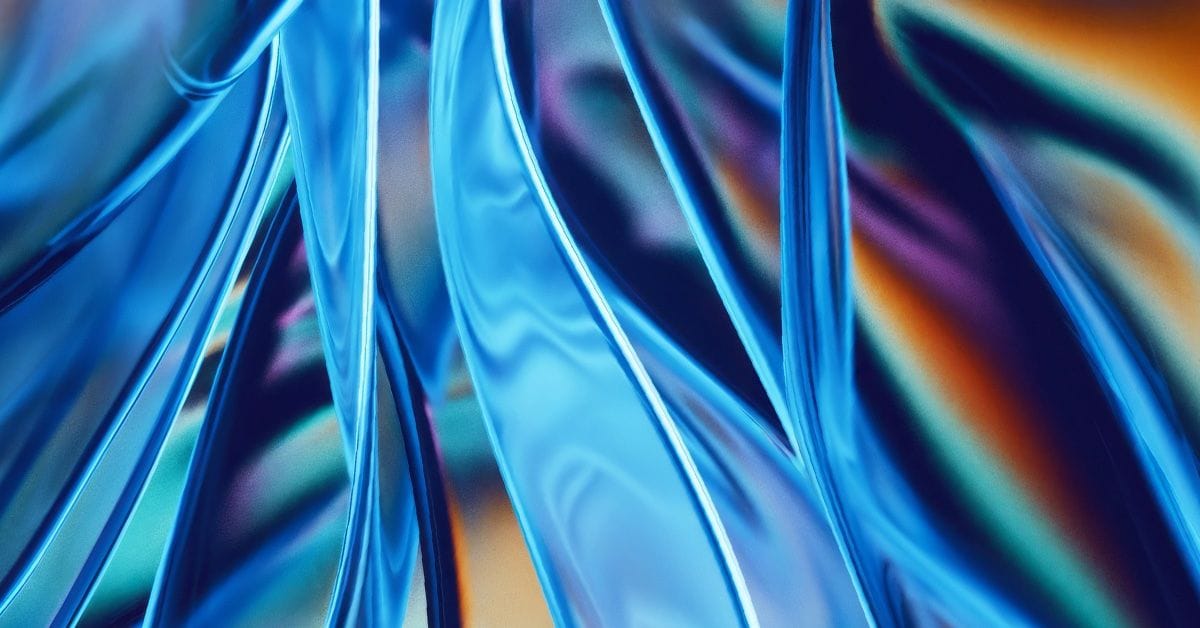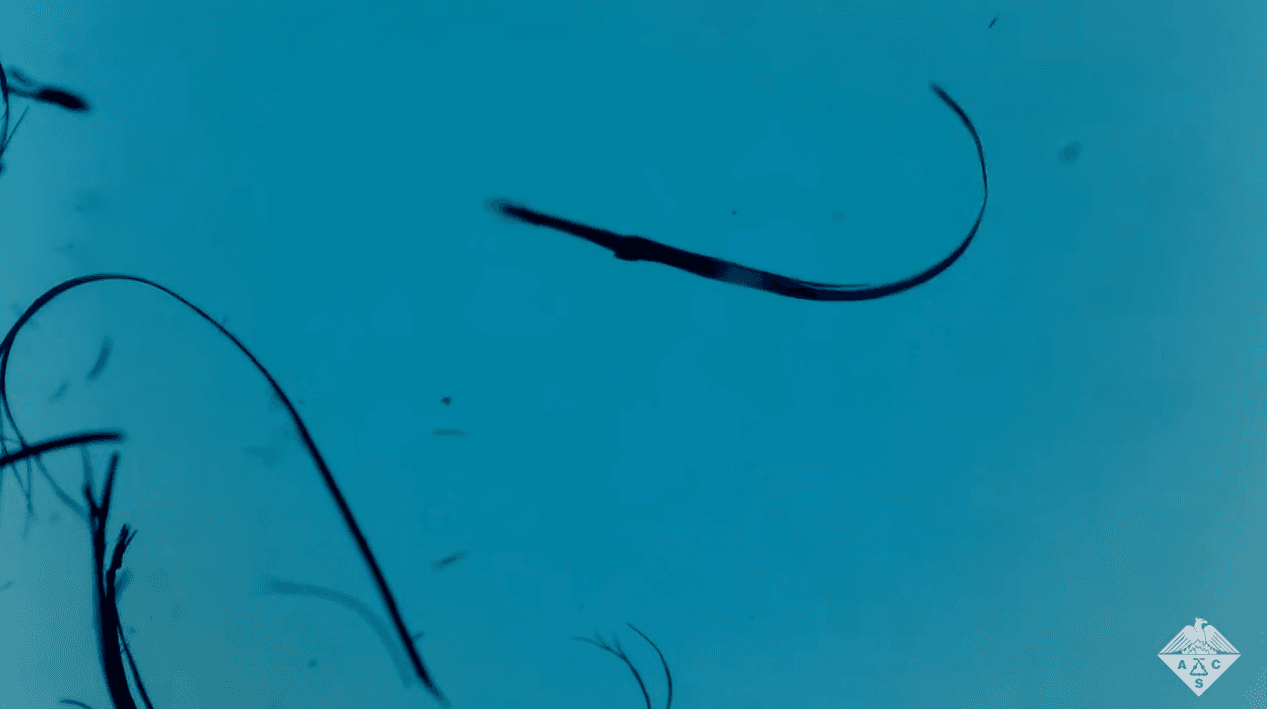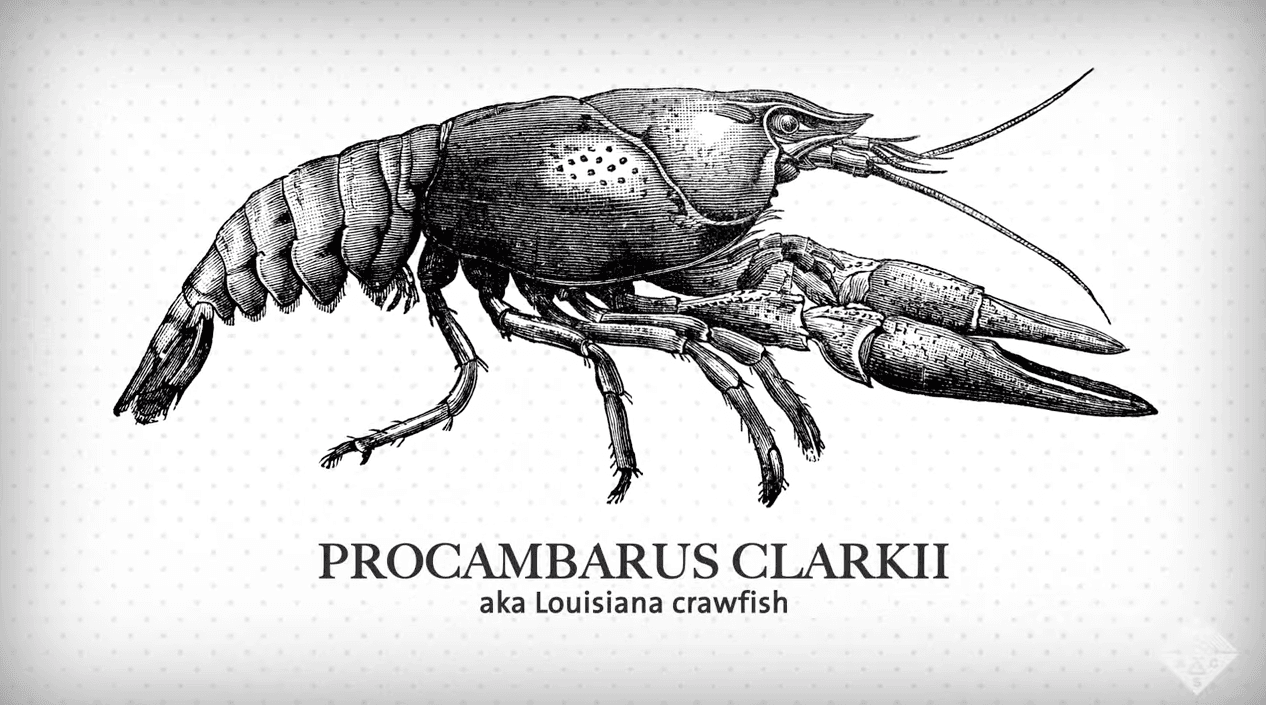From tiny dancers and toxic crawfish to water and wearables, we bring you more exciting chemistry research highlights presented at ACS Spring 2024.

The spring meeting of the American Chemical Society (ACS), held virtually and in person March 17-21, 2024, features more than 12,000 presentations on a diverse range of science topics. Earlier, we brought you an initial roundup of some of the noteworthy research presented at this year's meeting—and now we're back with more!
1. Toxic Nano Metals Found in Cannabis Vapes
Recent research reveals a concerning aspect of cannabis vapes: the presence of nano-sized toxic metal particles in the vaping liquid, even before the device is used. This study, conducted by Andrew Waye and colleagues at the Office of Cannabis Science and Surveillance at Health Canada, highlights a significant risk in both regulated and unregulated cannabis vaping products.
The team analyzed 41 samples of cannabis vape liquids, discovering startlingly high concentrations of metals like lead, especially in unregulated samples. This contamination, identified in unused vapes fewer than six months old, suggests the metals may originate from the device itself and not solely from the heating process. Crucially, they found that many of the metal particles are nanoscale in size, posing potential health risks when inhaled. Their findings underscore the different risks associated with vaping and also serve as a vital reminder of the importance of stringent regulation in ensuring the safety of cannabis products.
Read more of the team's related research published in ACS journals:
Evidence That Metal Particles in Cannabis Vape Liquids Limit Measurement Reproducibility
Zuzana Gajdosechova*, Joshua Marleau-Gillette, Matthew J. Turnbull, Duane C. Petts, Simon E. Jackson, Ashley Cabecinha, Hanan Abramovici, Andrew Waye, and Jeremy E. Melanson
DOI: 10.1021/acsomega.2c03797
Cannabis Inflorescence for Medical Purposes: USP Considerations for Quality Attributes
Nandakumara D. Sarma*, Andrew Waye, Mahmoud A. ElSohly, Paula N. Brown, Sytze Elzinga, Holly E. Johnson, Robin J. Marles, Jeremy E. Melanson, Ethan Russo, Lawrence Deyton, Christopher Hudalla, Gordon A. Vrdoljak, Joshua H. Wurzer, Ikhlas A. Khan, Nam-Cheol Kim, and Gabriel I. Giancaspro
DOI: 10.1021/acs.jnatprod.9b01200
2. Tiny Dancers: A New Era of Light-Driven Micro Machines
If you grew up in the '90s, there is a chance you either owned a Ribbon Dancer or remember the TV commercials advertising the fun, mesmerizing toy. Researchers have now developed molecular motors that mimic this flowing movement when exposed to light, similar to microscopic organisms. This study is the latest from Rabih O. Al-Kaysi and Christopher Bardeen, who have worked together for more than two decades on photomechanical crystals—tiny materials that can convert light energy into mechanical motion. The first version of these molecular motors required multiple wavelengths of light for activation, but the researchers have now achieved a more advanced result that can operate with just a single light source.
The team's ongoing work aims to further understand and control the self-assembly and movement of these motors, opening the door for innovative solutions in medical and technological fields. They could one be used in precision drug delivery, operating as tiny machines within the human body. They also have potential applications in technologies such as microsatellites due to their durability, resistance to corrosion, and immunity to electromagnetic interference.
Watch these "dancing" crystals in action in a video created by the ACS Science Communications team:
Read more of the team's related research published in ACS journals:
Effect of Fluorination on the Polymorphism and Photomechanical Properties of Cinnamalmalononitrile Crystals
Thomas J. Gately, Cameron Cook, Raghad Almuzarie, Imadul Islam, Zachary Gardner, Robbie J. Iuliucci, Rabih O. Al-Kaysi*, Gregory J. O. Beran*, and Christopher J. Bardeen*
DOI: 10.1021/acs.cgd.2c00930
Hybrid Organic–Inorganic Photon-Powered Actuators Based on Aligned Diarylethene Nanocrystals
Xinning Dong, Fei Tong, Kerry M. Hanson, Rabih O. Al-Kaysi, Daichi Kitagawa*, Seiya Kobatake*, and Christopher J. Bardeen*
DOI: 10.1021/acs.chemmater.8b04568
Surfactant-Enhanced Photoisomerization and Photomechanical Response in Molecular Crystal Nanowires
Fei Tong, Mingyue Liu, Rabih O. Al-Kaysi*, and Christopher J. Bardeen*
DOI: 10.1021/acs.langmuir.7b03848
3. Turning Food Waste Into Biodegradable Diapers and Menstrual Products
In a shift towards more sustainable hygiene products, scientists report on a new method to create biodegradable diapers and sanitary pads using protein biomass, commonly discarded in the food and agricultural sectors. Led by Antonio Capezza, the team's approach uses proteins like zein and gluten to replace plastics and synthetic polymers in these products. The resulting materials are not only environmentally friendly and compostable, but they are also potentially flushable, offering an exciting alternative to traditional, pollutant-heavy disposables.

PFAS in Period Products: Hot Topics in Chemistry from ACS Fall 2023
Unlike current alternatives that rely on virgin cotton and chemical treatments, the findings present a fully circular design, with the products decomposing in weeks and releasing nutrients back into the soil. Although slightly more expensive than traditional options, these new sanitary products hold promise for significant ecological benefits. The team is now preparing for pilot studies to test scalability as well as evaluations such as skin irritation tests, setting the stage for a potential market introduction of these eco-friendly alternatives.
Read more of the team's related research published in ACS journals:
Porous Thermoformed Protein Bioblends as Degradable Absorbent Alternatives in Sanitary Materials
Agnès Jugé, Jeannine Moreno-Villafranca, Victor M. Perez-Puyana, Mercedes Jiménez-Rosado, Marcos Sabino, and Antonio J. Capezza*
DOI: 10.1021/acsapm.3c01027
Sustainable Wheat Protein Biofoams: Dry Upscalable Extrusion at Low Temperature
Mercedes A. Bettelli, Antonio J. Capezza, Fritjof Nilsson, Eva Johansson, Richard T. Olsson, and Mikael S. Hedenqvist*
DOI: 10.1021/acs.biomac.2c00953
Carboxylated Wheat Gluten Proteins: A Green Solution for Production of Sustainable Superabsorbent Materials
Antonio J. Capezza*, Malin Lundman, Richard T. Olsson, William R. Newson, Mikael S. Hedenqvist*, and Eva Johansson*
DOI: 10.1021/acs.biomac.9b01646
4. How Discarded Batteries Could Impact Your Next Crawfish Boil
A new study reveals that crawfish could be unknowingly contributing to the transfer of lithium pollution through the food chain. Research led by Mississippi College undergraduates Andrew Doubert and Javian Ervin, alongside Assistant Professor Joseph Kazery, focuses on how these crustaceans absorb lithium—commonly used in rechargeable batteries and medications—from their aquatic environments. This accumulation raises concerns about the potential health risks to humans and other animals who consume these crawfish.
Their work revealed that crawfishes’ organs, especially the gastrointestinal tract, absorb significant amounts of lithium, a trend that could lead to higher concentrations of this potentially toxic element in predators higher up the food chain—including humans. The team also found that the absorption rate of lithium in crawfish increases with water temperature, suggesting a seasonal variation in the potential risk.
These findings underscore the need for greater attention to the environmental impact of lithium, especially given the widespread use of lithium-ion batteries and the common practice of disposing of these batteries in landfills. This research highlights an urgent need for improved disposal practices and further investigation into the ecological impact of lithium contamination.
Watch a Headline Science video about this research, created by the ACS Science Communications team:
5. Harnessing Quantum Dots for a Greener Future
The 2023 Nobel Prize-winning field of quantum dots continues to show promise for applications across many fields, including environmental sustainability. A team led by Md Palashuddin Sk of Aligarh Muslim University have been exploring the use of non-toxic quantum dots made from carbon and sulfur (Cdots and Sdots) for tackling water contamination and creating safer invisible inks. Their tiny size, controlled by quantum effects, allows them to behave uniquely and emit light in unexpected ways (such as making gold materials appear blue).
Using waste materials such as potato peels, Palashuddin's team have developed Cdots capable of identifying and breaking down pesticides and dyes in water. Additionally, they have developed methods to extract contaminants such as automotive oil from water, pointing towards new solutions for oil spill treatments.
By bringing this technology from the lab to real-world scenarios, the researchers aim to showcase the diverse and impactful uses of these tiny nanoparticles. Beyond environmental cleanup, these quantum dots could also have potential applications in light-emitting diodes and invisible inks for improved counterfeit detection.
Read more of the team's related research published in ACS journals:
Manganese Doping in Biomass Derived Carbon Dots Amplifies White Light-Induced Antibacterial Activity
Mohammad Tariq, Saurabh Shivalkar, Hammad Hasan, Amaresh Kumar Sahoo*, and Md Palashuddin Sk*
DOI: 10.1021/acsomega.3c08586
Visible Light-Mediated Photoactivated Sulfur Quantum Dots as Heightened Antibacterial Agents
Saurabh Shivalkar, Farwa Arshad, Amaresh Kumar Sahoo*, and Md Palashuddin Sk*
DOI: 10.1021/acsomega.2c03968
Mechanochemical Synthesis of Sulfur Quantum Dots for Cellular Imaging
Farwa Arshad, Md Palashuddin Sk*, Santosh K Maurya, and Hifzur R Siddique*
DOI: 10.1021/acsanm.1c00509
Luminescent Sulfur Quantum Dots for Colorimetric Discrimination of Multiple Metal Ions
Farwa Arshad and Md Palashuddin Sk*
DOI: 10.1021/acsanm.0c00394
6. Rethinking How and Why Water Freezes
Researchers have developed a theoretical model that provides a deeper understanding of how water’s freezing point can vary, a question that intrigues scientists and impacts daily life from weather forecasting to snow sports. The model addresses the long-standing question of ice nucleation—the process by which impurities in water raise its freezing point from a frigid -51 degrees Fahrenheit to the more familiar 32 degrees Fahrenheit.
The study, which was carried out at the University of Utah by Valeria Molinero and Yuqing Qiu, reveals that the angles between microscopic bumps on a surface play a significant role in determining at what temperature water will freeze. By analyzing hundreds of measurements and applying theoretical models, they discovered a mathematical expression that explains why certain angles between surface features facilitate the gathering and crystallization of water molecules at warmer temperatures.
This model could one day help facilitate the design of materials that encourage efficient ice formation for uses such as cloud seeding, as well as improve our grasp of atmospheric processes like cloud formation through ice nucleation. The researchers aim to apply this model to study ice-nucleating proteins in bacteria, potentially leading to advancements in fields such as climatology and biotechnology.
Read more of the team's related research published in ACS journals:
Multistage Condensation Pathway Minimizes Hysteresis in Water Harvesting with Large-Pore Metal–Organic Frameworks
Alberto Zaragoza, Matias H. Factorovich, and Valeria Molinero*
DOI: 10.1021/acs.chemmater.3c02113
What Controls the Limit of Supercooling and Superheating of Pinned Ice Surfaces?
Pavithra M. Naullage, Yuqing Qiu, and Valeria Molinero*
DOI: 10.1021/acs.jpclett.8b00300
Is Water at the Graphite Interface Vapor-like or Ice-like?
Yuqing Qiu, Laura Lupi, and Valeria Molinero*
DOI: 10.1021/acs.jpcb.7b11476
Why Is It So Difficult to Identify the Onset of Ice Premelting?
Yuqing Qiu and Valeria Molinero*
DOI: 10.1021/acs.jpclett.8b02244
7. Next-Gen Wearables: A Material That Adapts and Toughens on Contact
In a leap forward for wearable technology, a team at the University of California, Merced, has created a new electronic material that becomes tougher when stretched or impacted. This novel innovation is a fusion of four different polymers, drawing inspiration from the adaptive durability of cornstarch slurries. Unlike typical flexible polymers that are prone to breaking under rapid or large impacts, the material deforms or stretches, increasing in toughness upon contact.
The material's adaptive nature is thought to be due to microstructures that, according to the researchers, resemble "spaghetti and meatballs." Enhancements made with positively charged nanoparticles have led to an even greater display of strength under high stretch rates. This breakthrough presents exciting possibilities in the fields of wearable technology and flexible health monitoring electronics. Potential applications being explored include integrating the material into smartwatch bands, developing sensors for cardiovascular health or glucose monitoring, and even utilizing it for 3D printed electronic prosthetics.
Read more of the team's related research published in ACS journals:
Imparting High Conductivity to 3D Printed PEDOT:PSS
Ian M. Hill, Victor Hernandez, Bohao Xu, Josiah A. Piceno, John Misiaszek, Adrian Giglio, Emily Junez, Jiajun Chen, Paul D. Ashby, Robert S. Jordan, and Yue Wang*
DOI: 10.1021/acsapm.3c00232
Graphene-Assisted Solution Growth of Vertically Oriented Organic Semiconducting Single Crystals
Yue Wang, Jaime A. Torres, Adam Z. Stieg, Shan Jiang, Michael T. Yeung, Yves Rubin, Santanu Chaudhuri, Xiangfeng Duan, and Richard B. Kaner*
DOI: 10.1021/acsnano.5b03465
Highly Ordered Mesoporous CuCo2O4 Nanowires, a Promising Solution for High-Performance Supercapacitors
Afshin Pendashteh, Seyyed Ebrahim Moosavifard, Mohammad S. Rahmanifar, Yue Wang, Maher F. El-Kady, Richard B. Kaner*, and Mir F. Mousavi*
DOI: 10.1021/acs.chemmater.5b00706
*Press Release content and videos in this post are brought to you by the ACS Science Communications team. Learn more below.

